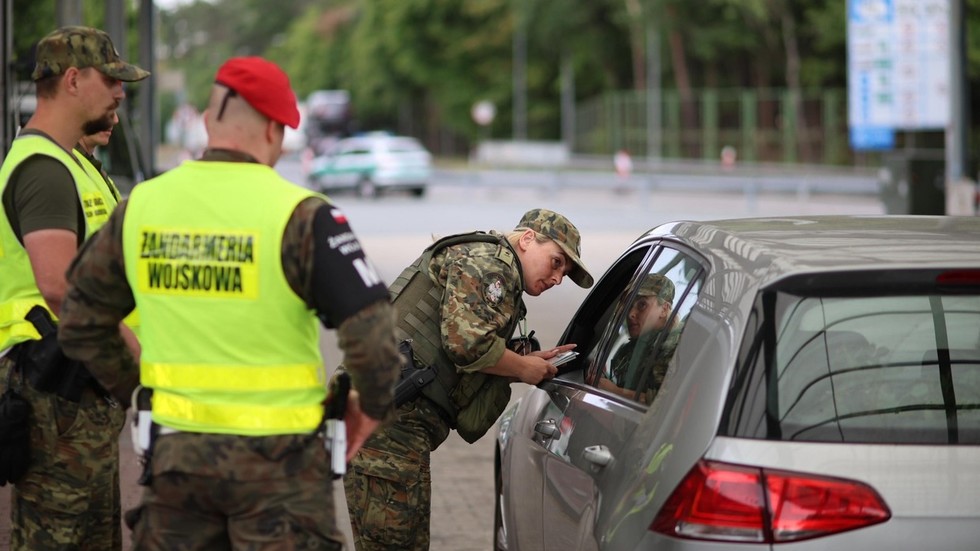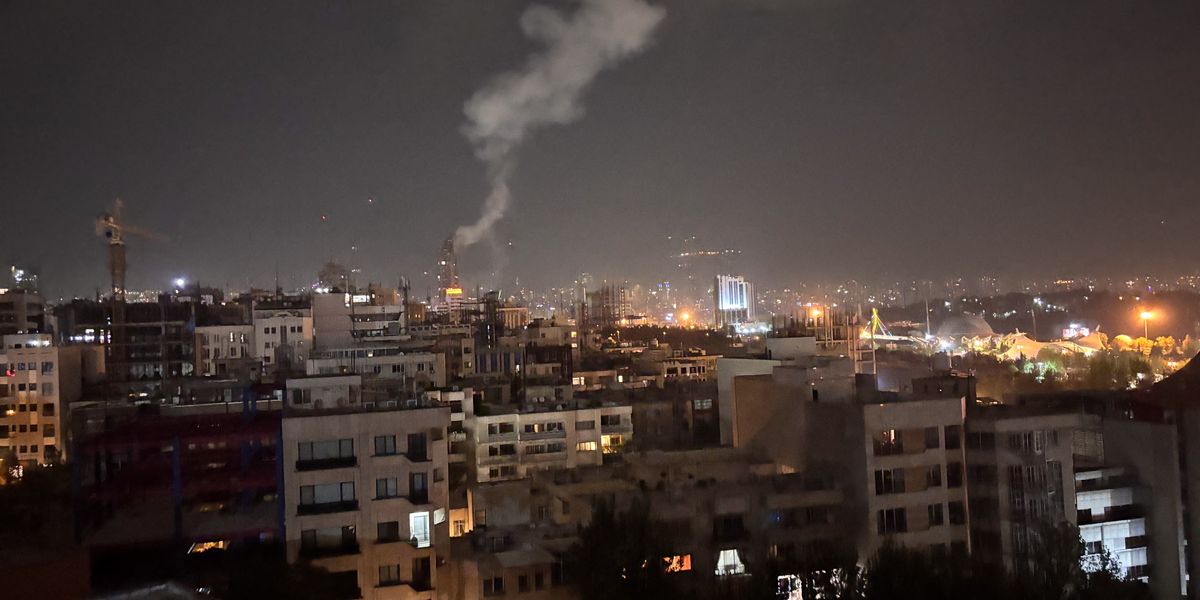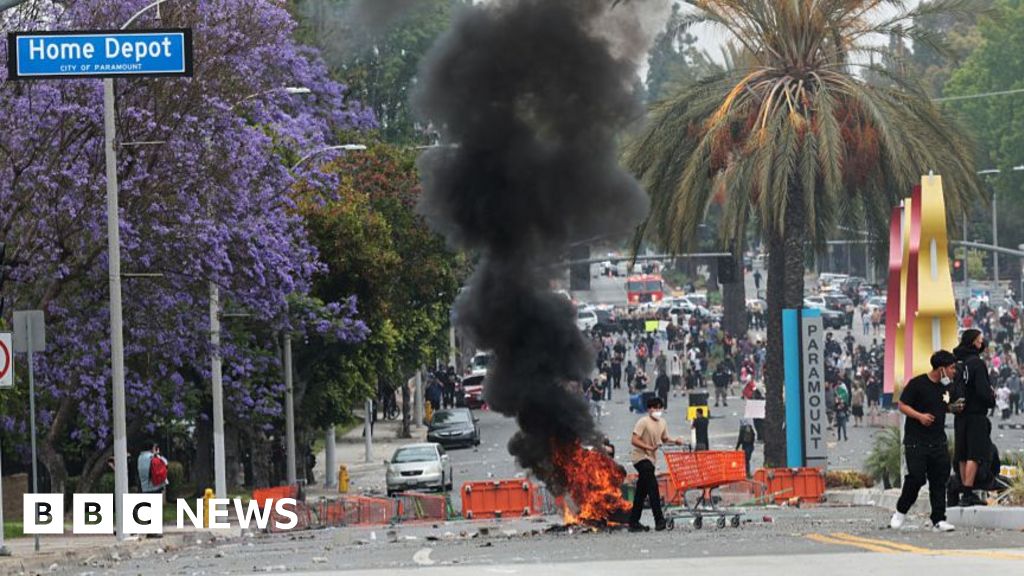Flash floods that ravaged Texas over the weekend have killed at least 82 people and left many others missing in the state in the southern United States.
The deaths and destruction caused by the floods have brought the government’s response and warning systems under scrutiny. A warning for flash floods in parts of Texas remains in place through Monday, and the search for missing people continues.
Here is more about what happened in Texas and how the government has responded:
What happened and what caused the floods in Texas?
While residents were still asleep early on Friday, flash floods hit Texas Hill Country, a region spanning central and southern Texas. In under two hours, the Guadalupe River swelled beyond its banks, surging higher than two-storey buildings at about 9 metres (30ft).
Drone footage taken on Saturday showed entire neighbourhoods inundated with high volumes of water.
Flash floods take place when large volumes of rain pour down rapidly and the ground is not able to absorb it. Central Texas is called “flash flood alley” because it is especially susceptible to flooding.
Where were the worst floods?
Kerr County was hit the hardest by the floods, which struck on US Independence Day and the start of a long holiday weekend.
The county, home to more than 52,000 people, sits on the Edwards Plateau in central Texas. The county is home to parks and outdoor sites as well as cultural hubs, including the Museum of Western Art.
 (Al Jazeera)
(Al Jazeera)What is Camp Mystic in Texas?
Many girls were killed and others went missing as the floods hit the riverside Camp Mystic, a private Christian summer camp for girls. The camp is located in the Hunt community in western Kerr County along the banks of the Guadalupe River about 137km (85 miles) northwest of San Antonio.
Camp Mystic was founded in 1926 by EJ “Doc” Stewart, a University of Texas American football coach. Since its establishment, the camp has operated every summer except for three years during World War II when the US government leased the camp to be a recovery facility for Army Air Corps veterans.
The camp runs three sessions every summer, offering more than 30 activities, such as archery, aerobics, basketball, ceramics, kayaking and golf.
When the flood hit, about 750 people were staying at Camp Mystic. At least 23 people from the camp are missing in the aftermath of the flooding.
How many people have died?
At least 82 people have been killed in the flooding, officials said.
Those include 68 people who died in Kerr County alone, Larry Leitha, its sheriff, told reporters on Sunday afternoon. Among the dead in Kerr County are 28 children.
Texas officials confirmed that at least 10 more people had died in nearby regions.
Texas Governor Greg Abbott said on Sunday that 41 people across the state were missing. “You will see the death toll rise today,” Texas Department of Public Safety Director Freeman Martin said at a news conference.
Al Jazeera’s Heidi Zhou-Castro reported from Washington, DC, that rescue workers had promised to “not give up until the very last person is found – either alive or their body is recovered”.
Has the Guadalupe River flooded before?
Yes, Kerr County has historically seen flooding from the Guadalupe River.
The flood over the weekend evoked memories of a disaster that occurred in July 1987. That flood began as a storm in Mexico and moved across the border, hitting western Kerr County and dumping rain into the upper part of the Guadalupe.
The 1987 flood also hit a summer camp, killing 10 teenagers at the Pot O’ Gold Christian Camp near Comfort, Texas, according to local media.
The National Weather Service (NWS) said the Guadalupe River on Friday surged past those 1987 levels.
Why is the government’s response being criticised?
President Donald Trump’s Department of Government Efficiency (DOGE) made cuts to the NWS, reducing funding and slashing staff.
The Trump administration has also proposed cuts and modifications to the National Oceanic and Atmospheric Administration (NOAA), the US government agency that conducts climate change research. The NWS is part of NOAA.
By early June, the NWS lost nearly 600 employees, who were either laid off or retired.
The Austin/San Antonio office of the NWS is short of six employees, and the nearby San Angelo office is short of four employees, according to Tom Fahy, the legislative director for the National Weather Service Employees Organization, a union that represents government employees, NBC News reported.
Some Democrats have argued that understaffing the NWS makes it hard to tackle weather disasters such as the flash flooding in Texas.
“I don’t think it’s helpful to have missing key personnel from the National Weather Service not in place to help prevent these tragedies,” Joaquin Castro, a Democratic member of the US House of Representatives from Texas, told CNN.
What emergency warnings did the government issue?
Despite the cuts, the government did issue a series of flood warnings for Texas. On Wednesday, the Texas Division of Emergency Management (TDEM) announced there was a threat of flooding, activating state emergency response resources. Later that afternoon, the Austin/San Antonio office of the NWS posted on X: “Scattered moderate to heavy showers continue to develop and expand to the Hill Country.”
On Thursday, the TDEM in an X post said western and central Texas continued to face a flood threat. The NWS said on X: “Pockets of heavy rain are expected and may result in flooding.”
The NWS also issued a flood watch, which is an alert that weather conditions are favourable for flooding. “It does not mean flooding will occur, but it is possible,” the NWS website said.
On Friday, the NWS upgraded the flood watch to a flood warning, which means a flood is imminent or occurring. At 1:26am (06:26 GMT), the NWS posted on X “flash flooding likely overnight with significant impacts possible”. About 4am (09:00 GMT), the NWS posted: “A very dangerous flash flooding event is ongoing. … Turn Around, Don’t Drown!”
An hour later, the San Angelo office of the NWS issued a rare flash flood emergency, and the Austin/San Antonio office followed suit a short time later.
What has the government said?
The Trump administration has dismissed allegations that understaffing of weather monitoring agencies was in any way to blame for the crisis, maintaining that the scale of the floods was unexpected and could not have been predicted.
Trump told reporters: “This is a 100-year catastrophe, and it’s just so horrible to watch.”
Scientists typically use terms like “100-year flood” or “500-year flood” to refer to a flood that is of unprecedented intensity compared with historical records, according to the US Geological Survey.
Trump added that he would visit Texas “probably on Friday”.
When Trump was asked if the meteorologists who had left the NWS because of the DOGE cuts should be rehired, the president said he “wouldn’t know”, adding, “I would think not. This was the thing that happened in seconds. Nobody expected it. Nobody saw it. Very talented people in there and they didn’t see it.”
Speaking at a news conference with Abbott, US Secretary of Homeland Security Kristi Noem said Trump was using “all the resources at the federal government” for search and recovery operations.
“For decades, for years, everybody knows that the weather is extremely difficult to predict, but also the National Weather Service over the years at times has done well and at times we have all wanted more time and more warnings,” Noem said.
She added that the Trump administration was “upgrading the technology” that the NWS uses.
What rescue efforts are taking place?
About 17 helicopters were deployed over the weekend to search for missing people. Additionally, the Texas National Guard was called up to help with the search operation.
“We continue our 24/7 search & rescue operation until every missing person is found,” Abbott wrote on X on Sunday.
What is the latest situation on the ground?
An area northeast of Austin to west of San Antonio in Texas Hill Country and along the Interstate 35 highway corridor remained under threat of flash floods on Monday, the NWS Austin/San Antonio office wrote in an X post about 3am (08:00 GMT) on Monday.
About the same time, the San Angelo office of the NWS also posted on X saying “latest indications are that our area is not done with flooding risks yet.”
* Important update at 10 PM: Latest indications are that our area is not done with flooding risks yet. Latest model data indicates additional showers/storms with heavy rain could develop by sunrise over our southeast counties & then spread westward Monday morning. #sjtwx #txwx pic.twitter.com/ouhOU93xzq
— NWS San Angelo (@NWSSanAngelo) July 7, 2025
In an earlier post a little after midnight (05:00 GMT on Monday), the Austin/San Antonio NWS office said it was “difficult to pinpoint exact locations where isolated heavier [rainfall] amounts occur”, adding that any additional rain would lead to flash flooding.
There remains a threat of flash flooding overnight and through the day on Monday somewhere over the Flood Watch area. Difficult to pinpoint exact locations where isolated heavier amounts occur. Any additional heavy rainfall will lead to rapid runoff and flash flooding. pic.twitter.com/9AHwr7Vkg5
— NWS Austin/San Antonio (@NWSSanAntonio) July 7, 2025

 5 hours ago
1
5 hours ago
1










 English (US) ·
English (US) ·